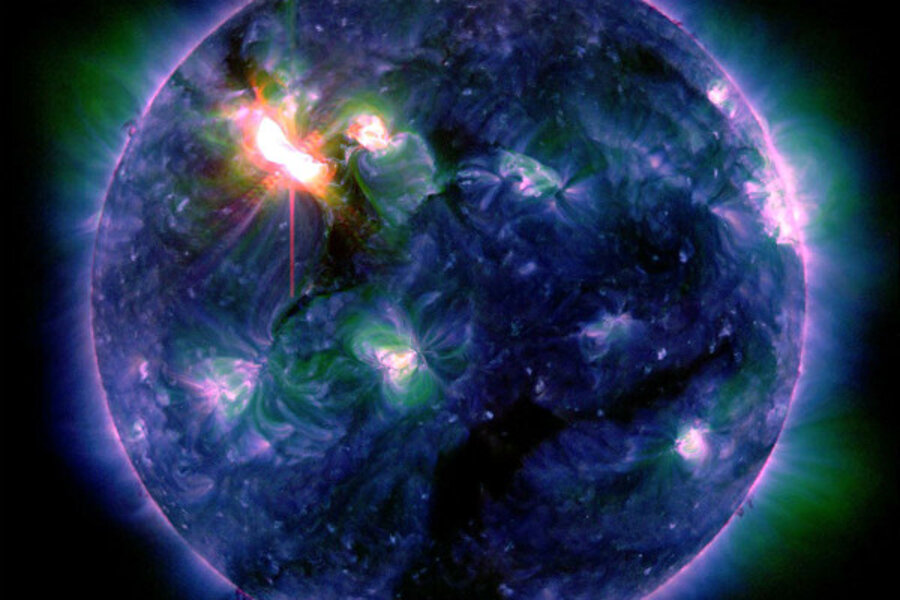Solar storms: Five key facts
Loading...
The sun unleashed a huge flare on Thursday, launching a stream of electrically charged plasma in the direction of Earth at about three million miles per hour. When the solar storm struck our planet's magnetic field on Saturday, it produced a dazzling northern lights display that could be seen as far south as the northern United States.
Here are five key facts about solar storms:
They start with an explosion equivalent to billions of nuclear bombs
A solar flare is a sudden explosion on the surface of the sun, releasing as much energy as a billion megatons of TNT, according to NASA. (By comparison, the atomic bomb dropped on Hiroshima was equivalent to, at most 0.017 megatons of TNT.)
Most solar flares are accompanied by coronal mass ejections, huge streams of charged plasma that travel at millions of miles per hour.
They can wreak havoc on electronics and power grids
These coronal mass ejections, when they strike the Earth, can cause moderate to serious geomagnetic storms, disrupting GPS satellites and knocking out power grids.
The CME produced by a February 2011 X-class solar flare, the highest classification, disrupted radio communications in China.
A 2008 report by the National Academy of Sciences found that a major solar storm could cause twenty times the economic damage of Hurricane Katrina.
They make for dazzling northern lights display
Geomagnetic storms can provoke intense displays of the northern and southern lights.
Scientists say that the colorful, dancing auroras be seen at the poles of the Earth because the charged particles get trapped in the Earth’s magnetic field and are then channeled along magnetic field lines.
How dangerous they are depend on how fast they are moving
Studying the speed of high-energy particles during powerful solar storms may help scientists determine their potential harm to people.
"Generally speaking, if they're slower, they'll deposit all of the energy into your body because they're not fast enough to fly right through," Joseph Kunches, a scientist at the Space Weather Prediction Center, told SPACE.com.
They come and go in cycles
The frequency of occurrences of solar flares loosely follows an 11-year solar cycle. During periods of high solar activity, there could be several storms a day. When the sun is less active, less than one flare a week could happen.
The maximum Sun's activity cycle is expected to peak in late 2013.





